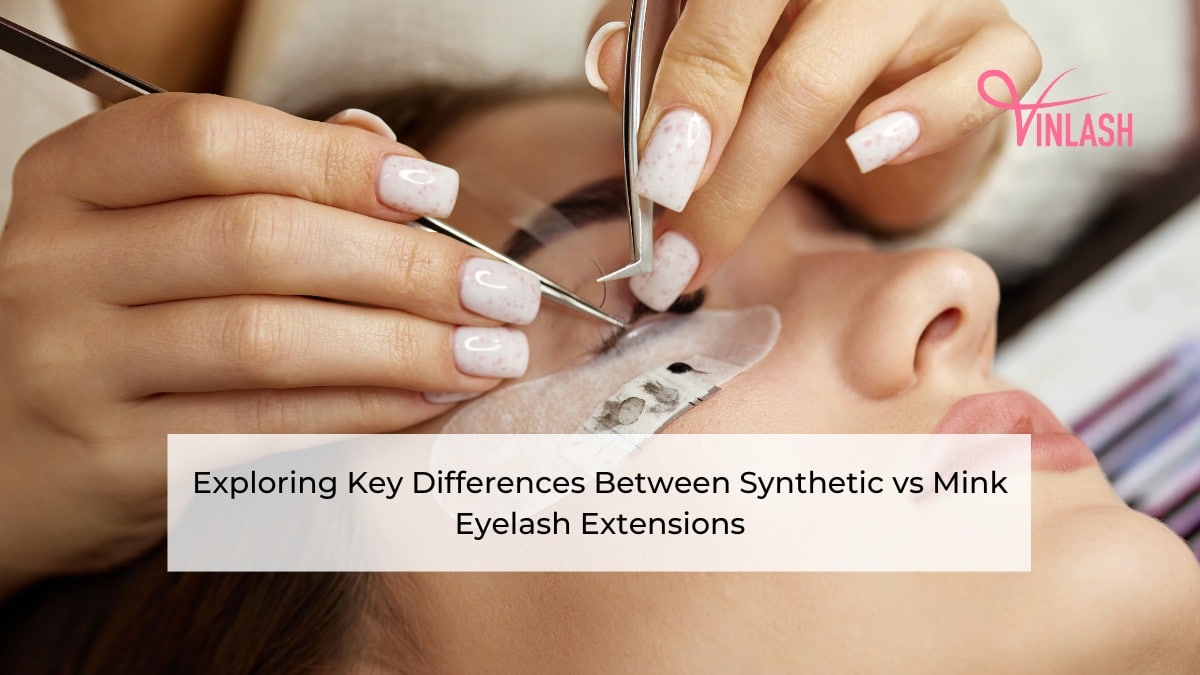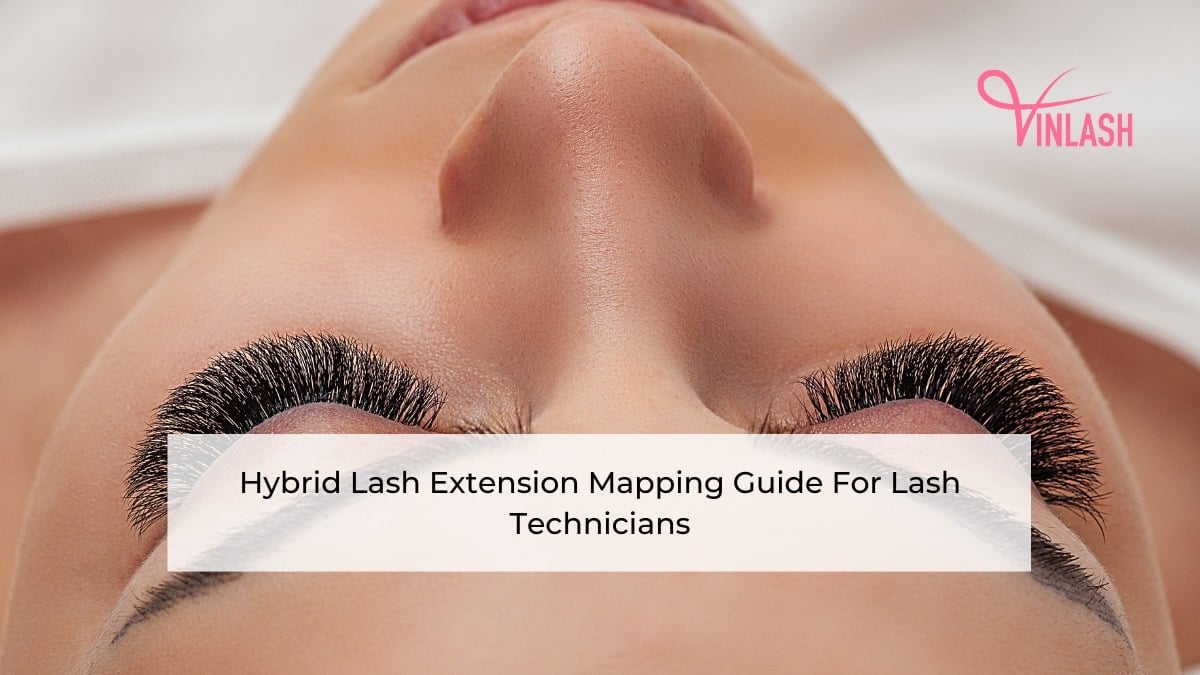Explore essential knowledge to deal with chemical burn eyelash extensions & prevention tips focusing on safe techniques, product awareness, and client care.
In the world of eyelash extensions, striving for beauty and aesthetic perfection goes hand in hand with a crucial commitment to safety. As you navigate through various tools and materials, it’s important to be aware of potential risks, such as chemical burn eyelash extensions. This often-overlooked hazard is vital to consider in your practice.
This article is designed to illuminate the causes, signs, and prevention strategies for chemical burns in eyelash extensions. It’s about equipping you with the knowledge to protect not only the beauty but also the comfort and well-being of your clients. Here, the goal is twofold: crafting stunning eyelash looks while ensuring each client’s experience is as safe as it is transformative.
Contents
Understanding Chemical Burn Eyelash Extensions
Eyelash extensions come with their own set of risks, one of which is chemical burns. Understanding what chemical burns are, in this context, is crucial for ensuring the safety and well-being of clients.
Chemical Burn Eyelash Extensions Explanation
A chemical burn in the context of eyelash extensions is a reaction that occurs due to the chemicals present in lash adhesives and related products. This section delves into:
- A chemical burn eyelash extensions arises when the skin or eyes come into contact with irritants, causing damage and inflammation.
- Common culprits include cyanoacrylate in lash adhesives and other harsh chemicals used in lash extension products.
- The skin around the eyes is delicate and particularly susceptible to these chemicals, leading to a higher risk of burns.
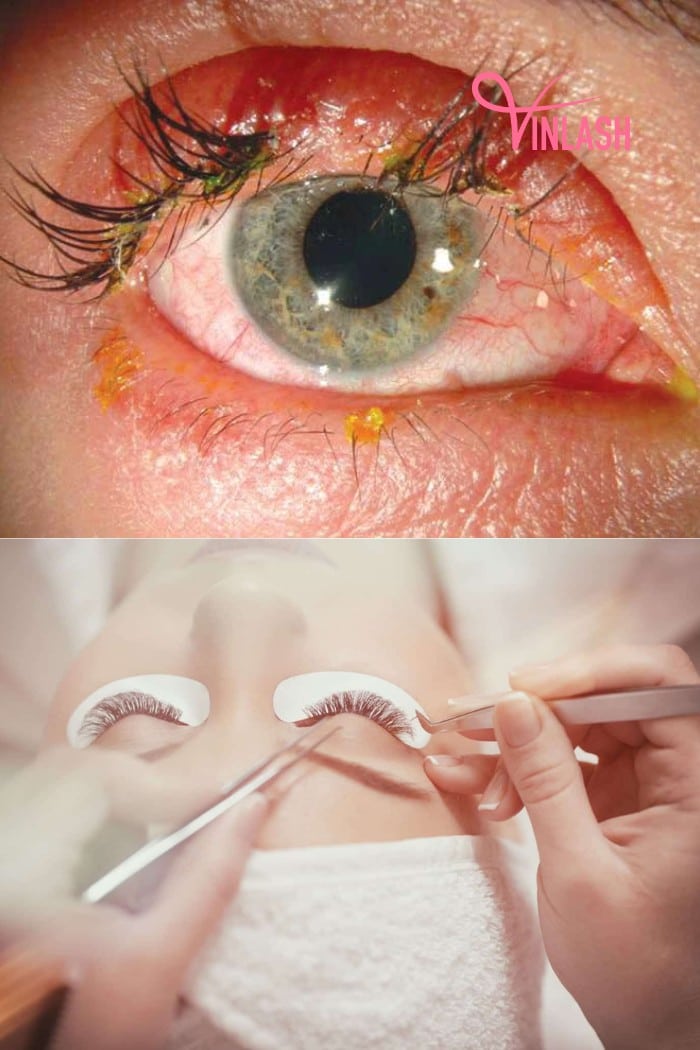
Chemical Burn Eyelash Extensions Explanation
In conclusion, awareness of the chemicals used in eyelash extensions and their potential impact on the sensitive eye area is essential for safe application and client care.
Common Symptoms Of Chemical Burn Eyelash Extensions
Recognizing the symptoms of chemical burns from eyelash extensions is key to prompt and effective treatment. These symptoms include:
- Redness and Irritation: Marked by noticeable redness and discomfort around the eyes.
- Burning Sensation: Clients with chemical burn eyelash extensions may report a stinging feeling in the eye area.
- Swelling: Swollen eyelids or surrounding skin is common.
- Pain or Discomfort: The affected area often experiences pain.
- Watery Eyes: A reaction to irritation, eyes may tear up more than usual.
- Blistering: Severe burns can lead to blistering of the skin.
- Vision Changes: Swelling or irritation can temporarily affect vision.
- Discharge from Eyes: Any unusual discharge can be a sign of a severe reaction.
- Sensitivity to Light: Increased light sensitivity due to irritation.
- Peeling or Flaking Skin: Post-healing symptoms include skin peeling.
Identifying these symptoms promptly can lead to quicker intervention and relief for the client.
Causes of Chemical Burn Eyelash Extensions
Preventing chemical burns in eyelash extensions involves understanding their causes. Key factors include:
- Improper Use of Glue or Adhesives: Excessive glue or close application to the skin can result in chemical burn eyelash extensions.
- Allergic Reaction to Chemicals: Allergies to chemicals in lash adhesives or materials can manifest as burns.
- Quality of Products: The use of substandard or expired products elevates the risk.
- Incorrect Application Technique: Mistakes in lash isolation or application can cause chemical contact with the skin.
- Client’s Skin Sensitivity: Clients with sensitive skin are more prone to react.
- Lack of Patch Testing: Forgoing a preliminary patch test can lead to unexpected reactions.
- Environmental Factors: External conditions like humidity can alter product behavior, increasing irritation risks.
- Cross-Contamination: Contaminated products during application can create harmful chemical reactions.
- Poor Aftercare: Inappropriate client aftercare practices can increase burn risks.
Understanding these causes is vital to minimize the risk of chemical burns and ensure a safe, comfortable experience for clients.
>>See more:
- Easy Removal With Banana Peel Method For Eyelash Extensions
- Guide To Deal With Allergic Reaction to Eyelash Extensions
Chemical Burn vs Allergic Reaction
Vinlash manufacturer helps you know the distinguishing between chemical burns and allergic reactions in the context of eyelash extensions is crucial for effective treatment and client care. While they may present similarly, their causes and treatments differ significantly.
Let’s explore how these two reactions vary across several key factors:
- Onset of Symptoms: Chemical burns typically show immediate symptoms following exposure, including redness and pain. Allergic reactions, on the other hand, often have a delayed onset, sometimes appearing hours or days later.
- Nature of Symptoms: Chemical burn eyelash extensions are characterized by visible skin damage, pain, and potential blistering. Allergic reactions commonly involve itching, swelling, and in more severe cases, systemic symptoms like breathing difficulties.
- Reaction Consistency: Allergic reactions tend to recur consistently with exposure to the allergen. Chemical burn severity can vary depending on the chemical’s concentration and the duration of exposure.
- Trigger Mechanism: Chemical burns result directly from exposure to harsh chemicals in products. Allergic reactions are an immune system response to a substance it perceives as harmful, even if it’s not typically irritant.
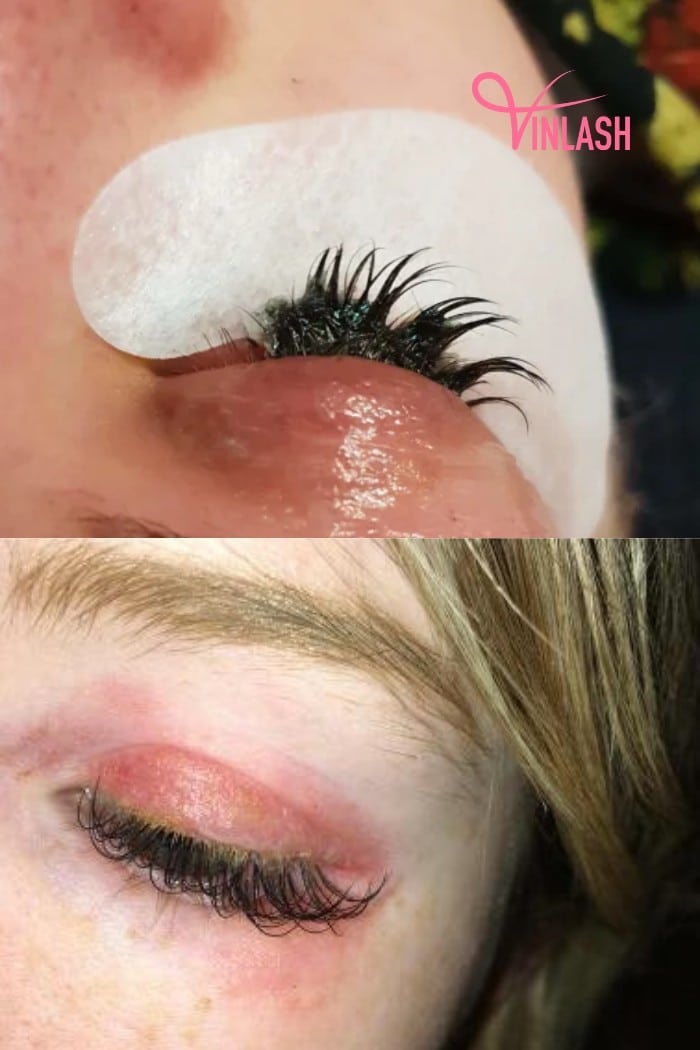
Chemical Burn vs Allergic Reaction
Being aware of these differences ensures that you can respond effectively to each situation, enhancing client safety and comfort during and after eyelash extension procedures.
How to Treat Chemical Burn from Lash Extensions?
Treating a chemical burn from eyelash extensions requires prompt and appropriate action:
- Immediate Actions: Initially, remove any lash extensions and clean the area gently. Rinse the eyes with saline or clean water to remove residual chemicals.
- Professional Medical Advice: It’s crucial to consult a healthcare professional, especially for severe reactions. They can provide specific advice and treatment for the specific condition of chemical burn eyelash extensions for each client.
- Treatment Options: Depending on the severity, treatments can range from cool compresses to soothe the area, to specific medicated eye drops for chemical burn from eyelash extensions, or ointments prescribed by a doctor.
- Aftercare: Post-treatment care is essential for healing. This includes avoiding further irritation, following medical advice, and possibly using protective eyewear.
In conclusion, understanding and correctly treating chemical burns, distinct from allergic reactions, is vital for the safety and comfort of clients receiving eyelash extensions.
>> See more: How To Navigate Blepharitis Eyelash Extensions Effectively
Chemical Burn Eyelash Extensions Prevention Tips
Preventing chemical burns in eyelash extensions is a multi-faceted approach that involves client preparation, meticulous application technique, quality product selection, and proper aftercare. These strategies help ensure the safety and comfort of clients undergoing this beauty treatment.
Client Preparation
Preparing clients before their eyelash extension appointment is crucial in minimizing the risk of chemical burns:
- Avoid Caffeine: Encourage clients to refrain from consuming caffeine prior to their appointment. This reduces eyelids flickering, decreasing the risk of eye exposure to chemicals.
- Eyelid Stabilization: Utilize foam tape or a sanitized coin to keep the eyelids stable and secure during the application process to avoid chemical burn eyelash extensions.
In conclusion, these preparatory measures significantly contribute to a safer eyelash extension experience, effectively reducing the chances of chemical burn incidents.
Application Technique
The right application technique is essential in preventing chemical burns during eyelash extension procedures:
- Use Foam Tape: Opt for foam tape instead of traditional eyepatches underneath the eyes, as it offers better protection against fumes.
- Check Eyepatch Placement: Make sure that eyepatches or tape are correctly positioned. Improper placement can cause discomfort and inadvertently lead to clients opening their eyes.
- Ensure Eyes are Fully Closed: Regularly use a lash mirror to verify that the client’s eyes remain completely closed throughout the treatment.
- Lighten Tweezer Pressure: Apply gentle pressure with isolation tweezers to avoid putting stress on the eyelids, making them more prone to chemical burn eyelash extensions.
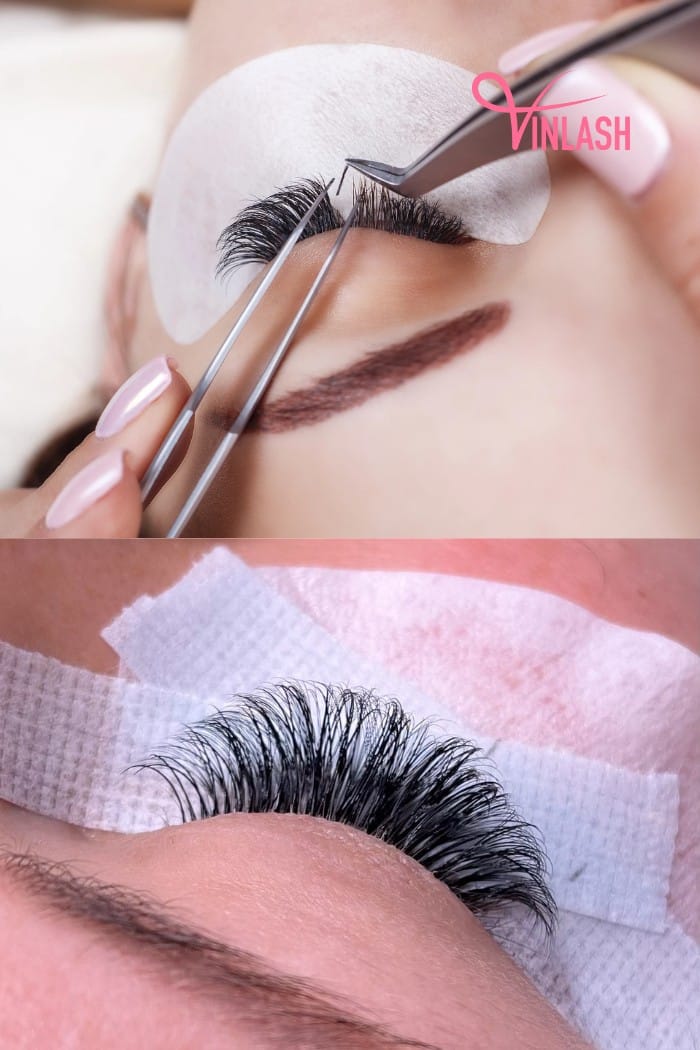
The right application technique is essential in preventing chemical burns during eyelash extension procedures
These application techniques help create a safer environment, significantly reducing the risk of chemical burns.
Product Quality and Usage
The quality of products used and their application play a pivotal role in preventing chemical burns:
- High-Quality Glue: Choose eyelash glues that are high-quality and devoid of harsh chemicals from reputable eyelash glue suppliers
- Patch Testing: Always perform a patch test on the client’s skin before full application to detect any potential reactions and lower the risk of getting chemical burn eyelash extensions.
- Manufacturer’s Instructions: Adhere strictly to the glue manufacturer’s guidelines for safe and effective use.
- Avoid Overapplication: Be cautious not to apply glue too near the eye or leave it on the skin for an extended period.
By adhering to these guidelines, lash technicians can significantly mitigate the risk of chemical burns.
Client Aftercare
Proper aftercare is vital in maintaining the health of the eye area post-eyelash extension application:
- Aftercare Instruction: Clearly inform clients about the potential risks associated with eyelash extensions and provide them with detailed aftercare instructions.
- Avoid Rubbing Eyes: Advise clients against rubbing their eyes and recommend using oil-free products near the eye area to prevent chemical burn eyelash extensions.
Effective client education and aftercare guidance are key to ensuring the longevity and safety of eyelash extensions, helping to prevent any adverse reactions like chemical burns.
Conclusion
In summary, the awareness and proactive prevention of chemical burn eyelash extensions are paramount. This encompasses a thorough understanding of the products and techniques used, coupled with vigilant client preparation and aftercare. Ongoing education and open communication with clients is key in elevating the standards of safety and care in eyelash extension procedures.
By adhering to these principles, you not only achieve aesthetic success but also ensure the utmost safety and satisfaction of your clients. This commitment to excellence and safety is what truly defines a responsible and professional approach in the eyelash extension industry.

